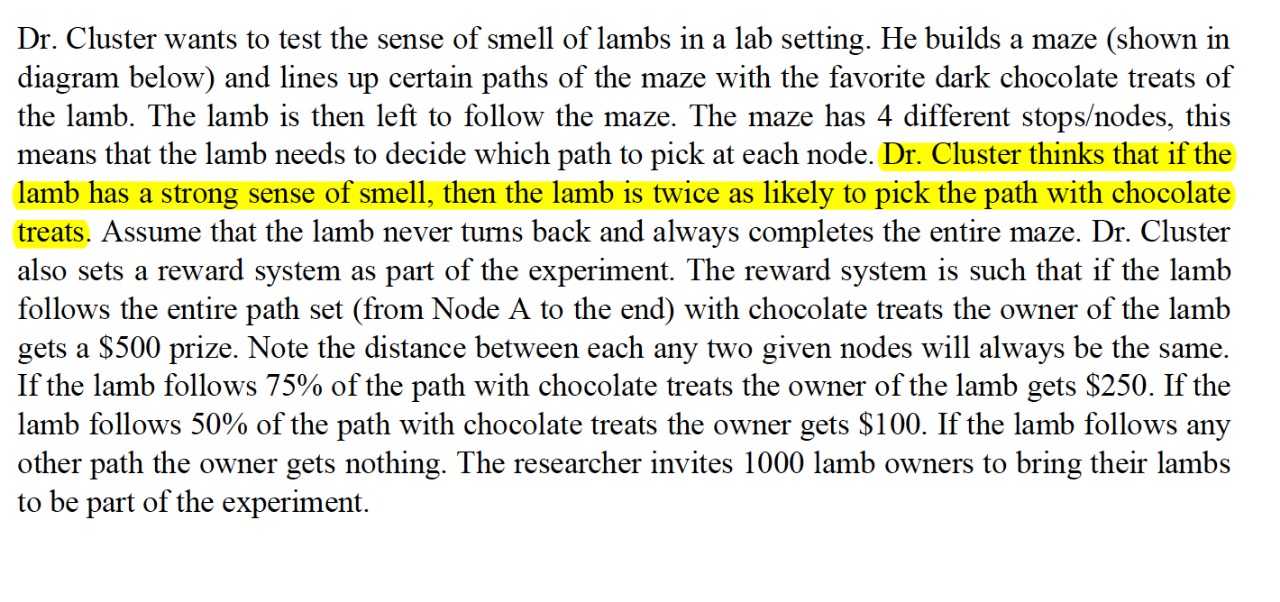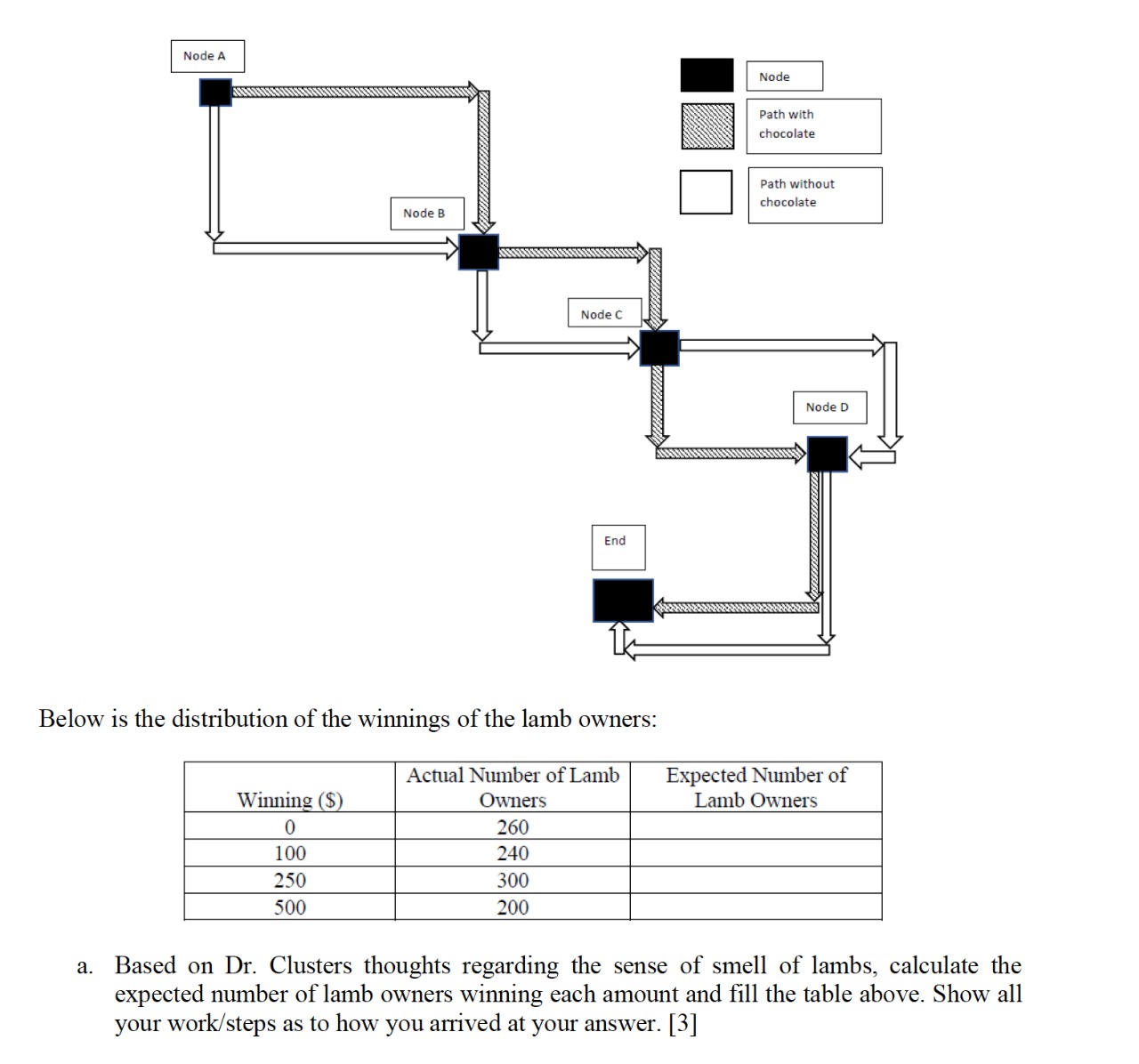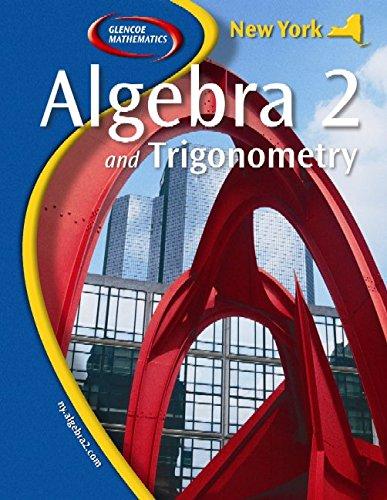Dr. Cluster wants to test the sense of smell of lambs in a lab setting. He builds a maze (shown in diagram below) and lines up certain paths of the maze with the favorite dark chocolate treats of the lamb. The lamb is then left to follow the maze. The maze has 4 different stopsodes, this means that the lamb needs to decide which path to pick at each node. Dr. Cluster thinks that if the lamb has a strong sense of smell, then the lamb is twice as likely to pick the path with chocolate treats. Assume that the lamb never turns back and always completes the entire maze. Dr. Cluster also sets a reward system as part of the experiment. The reward system is such that if the lamb follows the entire path set (from Node A to the end) with chocolate treats the owner of the lamb gets a $500 prize. Note the distance between each any two given nodes will always be the same. If the lamb follows 75% of the path with chocolate treats the owner of the lamb gets $250. If the lamb follows 50% of the path with chocolate treats the owner gets $100. If the lamb follows any other path the owner gets nothing. The researcher invites 1000 lamb owners to bring their lambs to be part of the experiment. Node A Node Path with chocolate Path without Node B chocolate Node C Node D End Below is the distribution of the winnings of the lamb owners: Actual Number of Lamb Expected Number of Winning ($) Owners Lamb Owners 0 260 100 240 250 300 500 200 a. Based on Dr. Clusters thoughts regarding the sense of smell of lambs, calculate the expected number of lamb owners winning each amount and fill the table above. Show all your work/steps as to how you arrived at your answer. [3]your work/steps as to now you arrived at your answer. [.6] . Conduct relevant hypothesis test to check if the lambs do have strong sense of smell or not. Show all steps clearly. [3] Dr. Clusters friend Dr. Bootstrap brings him special dark chocolate treats which have a strong smell. Dr. Bootstrap says that with these newer treats, the lamb is four times as likely to pick the path with the treat. Conduct relevant hypothesis test to check if his claim holds. Show all steps clearly. [4]









